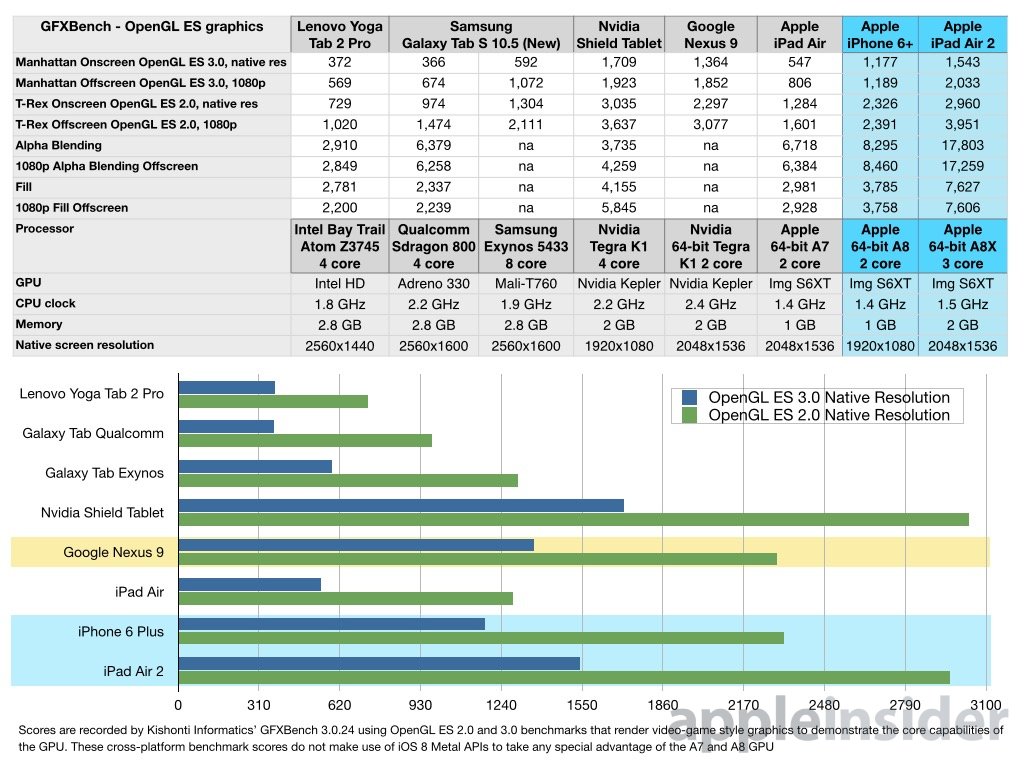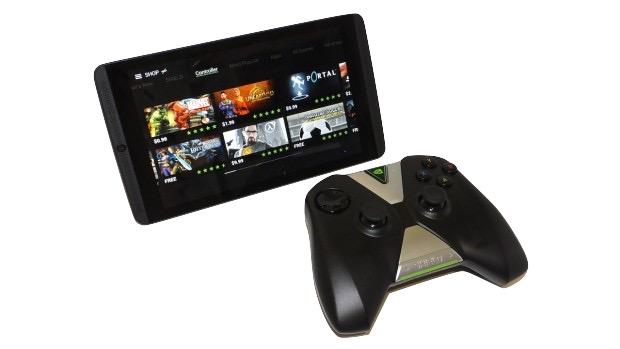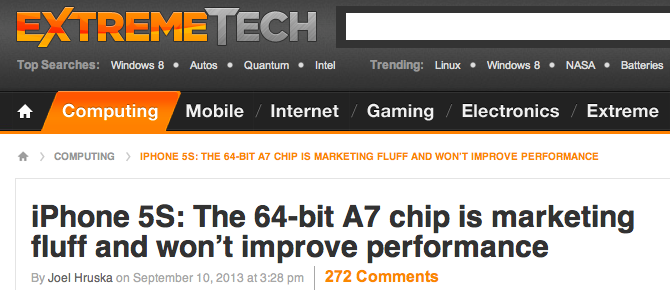Apple's new A8X Application Processor not only trounces other Android tablets in CPU tasks, but is also advancing iPad Air 2 to the front of the line in graphics operations as well, even before considering the ten-fold boost potential of iOS 8's Metal API.
Kishonti Informatics' GFXBench OpenGL ES 2.0 and 3.0 benchmarks for top performing tablets give iPad Air 2 a comfortable lead over the Google-branded, HTC-built Nexus 9, powered by the "Denver" Tegra K1 Application Processor, despite Nvidia's core competency in developing GPUs. GFXBench renders video-game style graphics to demonstrate the core capabilities of the GPU.
With their identical 2048x1536 screen resolutions, iPad Air 2 and the soon-to-be released Nexus 9 offer a nearly direct comparison between Apple's 64-bit A8X and the Nvidia-designed "Kepler" graphics in the latest Tegra K1, hailed as Android's first 64-bit mobile chip to reach the market.
Compared to Nexus 9, iPad Air 2 scored 13 percent higher in Open GL 3.0 and 28.9 percent faster using Open GL 2.0, despite the Nexus 9's Tegra K1 being clocked 60 percent faster.
In CPU operations, iPad Air 2 performed GeekBench multiple-core tests 39 percent faster. Both Application Processors are designed with 64-bit CPU cores using the ARMv8 instruction set, although the A8X uses three CPU cores to the K1's two.
Nvidia announced the Tegra K1 at the beginning of this year at CES, calling it "the first mobile processor to run Unreal Engine 4," the latest video gaming engine from Epic Games targeting PCs, PlayStation 4 and Xbox One consoles. This summer however, Apple brought Epic on stage at WWDC (below) to demonstrate its Unreal Engine 4 running on Apple's A7 chip from last fall, using Metal to supercharge its performance.
Three months later, Apple introduced its A8 successor for iPhone 6 models, delivering enhanced CPU and GPU power that beats comparable new high end Android flagship smartphones by a significant margin.
Apple boosts iPad Air 2 while most Android tablets aim downmarket
Apple's latest A8X Application Processor further enhances the graphics power for iPad Air 2, beating not only Nvidia's Kepler mobile GPU but even more soundly trouncing a series of top-scoring Android tablets powered by Intel Atom (with the "Bay Trail Intel HD" GPU), Qualcomm Snapdragon (with an Adreno GPU), or even Samsung's yet to be released new Exynos Application Processor (which uses an ARM Mali GPU).
Because tablets sell at lower price points than typical high end smartphones, vendors have often resorted to using lower powered chips in a bid to reach price-sensitive consumers. Apple itself is still selling the original 2012 iPad mini to round out the bottom of its tablet offerings, a device powered by the now relatively meek A5.
At the top of the iPad range, however, Apple has aggressively pushed the envelop in high end CPU and graphics performance. Last year's iPad Air and iPad mini 2 were the first tablets powered by a 64-bit chip. This year, Apple opted to design an enhanced A8X for iPad Air 2, giving it even more graphics performance over the A8 in order to drive the 3.1 million pixels of the iPad's Retina Display (in comparison, iPhone 6 and 6 Plus have 1 million and 2 million pixels, respectively).
As with their smartphones, a variety of Android vendors (notably Samsung and Lenovo) are equipping their tablets with extremely pixel dense displays but lower end processors that lack the power to comfortably drive all those pixels.
Nvidia's Tegra K1 fails to live up to the hype
In the other direction, Nvidia debuted its new Tegra K1 chip in its own gaming-oriented Shield Tablet this summer, but gave the device a lower resolution on par with Apple's 5.5 inch iPhone 6 Plus.
That enables the Shield Tablet to play stretched Android smartphone games at benchmarked frame rates that beat A7-powered iPads, the A8-powered iPhone 6 Plus and even the A8X powered iPad Air 2 (although— somewhat ironically— the Shield's atypical architecture actually prevents it from running some of the most popular Google Play video games).
However, the Shield Tablet's low resolution and wide format didn't make it very appealing as a general purpose alternative to iPad, resulting in meager sales volumes for the experimental niche device.
Google, Nvidia and HTC (which had abandoned the tablet market in 2012 after the flop of Android 3.0 Honeycomb) subsequently collaborated on the new Nexus 9 in order to deliver an iPad-style resolution and display ratio in an effort to deliver a viable tablet competitor to Apple (or ostensibly, to demonstrate how another company could do this).
However, after matching the iPad's pixel workload, the Nexus 9's Tegra K1 falls behind in both CPU and GPU performance, even with Nvidia's new 64-bit CPU cores and using an even faster clock rate. Nexus 9's GPU and CPU benchmark scores also don't reflect the fact that iOS apps already have a year-long lead in gaining 64-bit optimizations and can benefit dramatically from the 10x potential of Metal to further enhance GPU performance on the same hardware.
The tiny installed base of Android devices with either 64-bit CPUs or Kepler graphics will contribute toward a lack of optimization in the software app market that will further exaggerate these underling hardware performance differences.
Google is discounting the Nexus 9 by $100 over the cost of the cheapest iPad Air 2, but won't be matching Apple's larger capacity options or Touch ID, and the new tablet uses a smaller 8.9 inch screen that places it midway between the iPad Air 2 and an iPad mini in size.
This all happened before
Joel Hruska, the same ExtremeTech writer who insisted last year that Apple's "64-bit A7 is marketing fluff and won't improve performance," expressed a very different opinion on 64-bit chips from Nvidia earlier this summer.
Three months ago, he wrote, "On paper, and in Nvidia's internal benchmarks, the [Tegra K1] 64-bit Denver CPU core sounds rather exciting. The CPU handily beats every other ARM CPU on the market by some margin, and even does pretty well against the dual-core [Intel] Celeron 2955U (Haswell). The 192-core Kepler GPU will probably be the fastest GPU on the market by some margin, too."
Throughout 2014, ExtremeTech, Toms Hardware and a series of other sites with a dim view of Apple compared preliminary Tegra K1 benchmarks against last year's A7, declaring the Tegra K1 "the fastest GPU on the market by some margin" apparently without considering that Apple would also be working on a new mobile chip for the more than 70 million iPads it expects to sell the following year.
Apple's big investments in mobile silicon paying off
Apple currently offers Nvidia's PC-class GPUs in its fastest MacBook Pros, while featuring AMD GPUs its new 5K Retina Display iMac and high end Mac Pro. It also uses basic Intel HD graphics across its entry level Mac lineup.
Apple's line of iOS-powered products, however, have used PowerVR mobile-optimized GPUs developed by Imagination Technologies, a British design firm in which Apple owns nearly a 10 percent stake.
Apple's highly profitable sales of over 500 million iPhones and more than 225 million iPads has driven its investment in both its own custom silicon designs and the licensing of the best available technologies for use in its products. With Google's Android and Microsoft's Windows Phone driving prices downward, it will be increasingly difficult for rival mobile chip vendors to rival Apple's current ownership of the high end of tablets and smartphones— the most profitable mobile market segments by a huge margin.
Texas Instruments abandoned its OMAP mobile chip market after a string of flop products (including Amazon's Kindle Fire, the Nook, BlackBerry Playbook and the Google-Samsung cobranded Galaxy Nexus) using its chips failed to sell.
Similarly, after the failure of its Tegra 4i, Nvidia has given up on the smartphone market too, leaving Qualcomm and low end chip makers like MediaTek as the primary remaining vendors for smartphone Application Processors.
Going forward, Apple's iPads— powered by increasingly sophisticated A-series Application Processors— appear to be on a trajectory to continue their erosion into Intel's PC chip business. While there's been much handwringing about Apple's annual iPad sales decreasing by 4 percent over the previous year, IDC reported that PC industry shipments contracted by 9.8 percent over the previous year, and the firm predicted a 6 percent drop for PCs sold this year.
Flush with profitability from large volume sales of high end Macs and iOS mobile devices, Apple appears positioned to continue being able to design and finance the development of new generations of advanced mobile processors without having to worry if there will be a market for its latest designs.
 Daniel Eran Dilger
Daniel Eran Dilger










-m.jpg)






 Brian Patterson
Brian Patterson
 Charles Martin
Charles Martin


 Malcolm Owen
Malcolm Owen
 William Gallagher
William Gallagher
 Christine McKee
Christine McKee
 Marko Zivkovic
Marko Zivkovic







181 Comments
nVidia is getting squeezed. Sure, they rule the roost in PC gaming GPU's...but that's an ever declining market. Profitable, but niche. They were soundly trounced by AMD in the console market, with nary an nVidia component in sight. Tegra is a constant flop. They might be smart to just concentrate on being a profitable niche vendor.
Good article!
The iPad Air 2 is indeed insanely powerful! Gaming on it is great! I can't wait until more metal games get released!
And once again ignorant Fandroids the world over are shocked by the actual performance of the A8X chip and how it devastates what they have been hyping in upcoming Android tablets. Just yesterday on another forum, I was reading that some Fandroid was claiming that the Nexus 9 was more powerful, because you know, the specs! What a damn fool!
And ignoring the piss poor performance of the Nexus 9 for a moment, what truly makes that tablet belong in the dumpster is the fact that 32 GB is max RAM! Seriously? Google apparently isn't even trying anymore. Android has now further cemented it's position as the OS for the unsophisticated and the choice for the truly ignorant.
Well of course. Apple software is designed specifically for Apple hardware.
Optimization already comes with the meal.
NVidia first demonstrated their K1 processor at Siggraph in 2013. Their strategy appears to be to show off next years processor and compare its performance to this years shipping processors and GPUs. In that light it appears to be extremely impressive but by the time it ships in an actual phone or tablet, it is merely average. The K1 has decent performance but I suspect it is being held back by Google's interpreted/JIT code. No matter how much Google tries, native compiled code will always run rings around it.
The Air 2 seems like the only tablet on the market with no compromises. Great display, super thin and light, best performance. Almost makes my 3rd gen iPad look ancient.